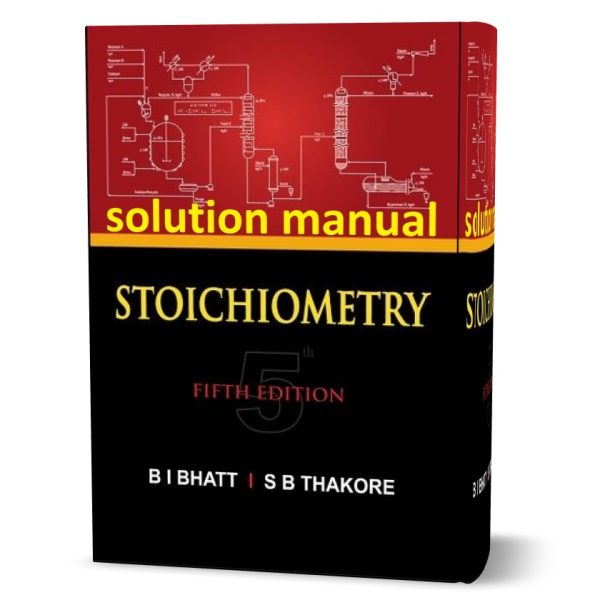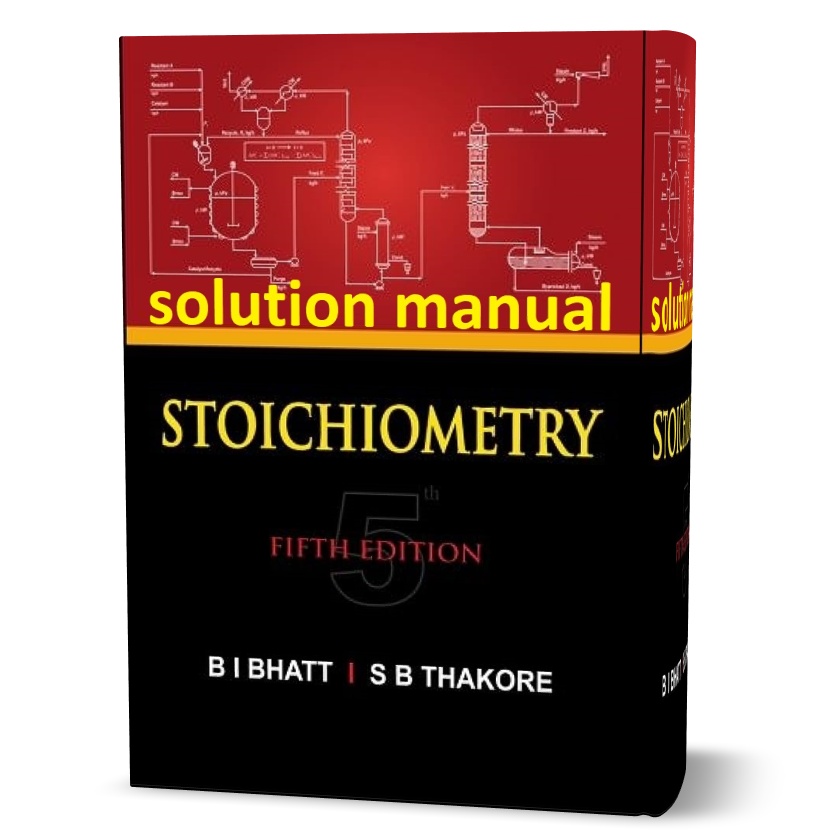Stoichiometry 5th edition Bhatt & Thakore solutions manual pdf
Original price was: $12.00.$9.00Current price is: $9.00.
Published: 2010
Edition: 5th
Pages: 388
Type: pdf
Size: 1MB
SM Content: Chapters 1-9 all problem answers
Solution Sample: sample file
Download After Payment
- Description
- Reviews (0)
Description
Description
Download free Stoichiometry 5th edition B I Bhatt & S B Thakore solutions manual pdf | all problem answers and solution Physical theories gain their definiteness from the mathematical form in which they ore expressed. The function of numbering and measuring is indispensable even in order to re-produce the raw material of facts that are to be reproduced and unified In a theory. DR E A CASSIRERI German Philosopher No better introduction can be given than the above quotes of Dr Cassirer which clearly indicate that a thorough knowledge of dimensions and the various systems of units is not only essential but a must for a logical understanding of the subject. Mathematics and technology are international languages. for download solutions manual click here.
Stoichiometry 5th edition Bhatt & Thakore solutions manual pdf
Engineers converse effectively in formulae and units. To understand one another, communication is required in commonly accepted units. The expression of results of measurements and/or of calculations in a symbolic and numerical form is essential for the development of physics, chemistry and technology. The study of stoichiometry is no different than that of the other sciences and one must start with the understanding of fundamental quantities, namely, dimensions. This will facilitate appropriate and consistent units in solving stoichiometric problems. This chapter not only deals with these fundamentals but also with the methods of conversion of the units from one system to another.
Ell DIMENSIONS AND SYSTEMS OF UNITS According to Maxwell, every physical quantity can be expressed as a product of a pure number and a unit, where the unit is a selected reference quantity in terms of which all quantities of the same kind can be expressed. Physical entities are defined by means of certain quantities, such as mass, length, pressure, energy, etc. While defining a particular physical quantity, two questions need to be answered; (i) What would be the most convenient unit? (ii) What would be the best form and material for the standard, physically representing that unit? Physical quantities can be classified as fundamental quantities and derived quantities. The first group consists of major four important quantities; namely—length, mass, time and thermodynamic temperature.
New to this
These Downlaod free Stoichiometry 5th edition B I Bhatt & S B Thakore solutions manual pdf | all problem answers and solution are called dimensions or base units and are represented by symbols L, M, a and T, respectively. The second group consists of quantities derived from the fundamental quantities, such as area, force, pressure, energy, etc. It follows, therefore, that derived quantities are represented algebraically in terms of multiplication and division of fundamental quantities. The fundamental quantities are represented by a system of units according to the system of measurement. Basically, the standard, physically representing the base units, differs in different systems of units. In this chapter, three systems of units, viz., FPS, MKS and SI will be discussed. The FPS system, developed in England, is based on foot, pound and second as standard measurements for length, mass and time, respectively.
This is now commonly known as US Customary Units system. In 1791, in France, a system of units entirely based on the unit of length, the meter was created. Because of its foundation being entirely based on the meter, this system got the name System Manrique or Metric System (or MKS). The unit of mass in the metric system is kilogram. An important feature of this system was the decimal expression. This system was increasingly adopted in various countries, including India. In India, the MKS system was introduced in 1957. Another subsidiary system, the system, was derived from the MKS system. The base standards of the system were accepted to be those of the MKS system.




Reviews
There are no reviews yet.